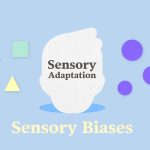Absolute Threshold is commonly used in Marketing to understand Consumer Behaviour. The lowest level an individual can experience a sensation is called the absolute threshold. It is the point at which a person can detect a difference between something and nothing,
An a is the smallest level of stimulus that can be detected, usually defined as at least half the time. The term is often used in MARKETING and CONSUMER RESEARCH.
Examples of Absolute Threshold
Since we use our senses all the time, the absolute threshold plays a part in everything we do.
- Vision – A candle flame 30 miles away
- Hearing – A watch ticking 20 feet away
- Smell – A drop of perfume in a 6-room house
- Taste – A teaspoon of sugar in a gallon of water
- Touch – A wing of a fly on your cheek, dropped 1 cm
It is concerning vision is the smallest amount of light that you can detect. Imagine, for instance, a car with its headlights on driving toward you in the dark night.
At first, you can’t see the car, because it is too far away. The headlights are not intense enough for you to detect. But, at some point, you are able to see the headlights, because it reached your absolute threshold.
Sensory Input of Absolute Threshold
Hearing
For hearing, the absolute threshold refers to the smallest level of a tone that can be detected by normal hearing when there are no other interfering sounds present. An example of this might be measured at what levels participants can detect the ticking sound of a clock.
Young children generally have a lower absolute threshold for sounds since the ability to detect sounds at the lowest and highest ranges tends to decrease with age.2
Vision
For vision, the absolute threshold refers to the smallest level of light that a participant can detect. Determining the absolute threshold for vision might involve measuring the distance at which a participant can detect the presence of a candle flame in the dark.
For example, imagine that you are a participant in a psychology experiment. You are placed in a dark room and asked to detect when you are first able to detect the presence of light at the other end of a long room. In order to determine the absolute threshold, you would go through a number of trials.
During each trial, you would signal when you are first able to detect the presence of light. The smallest level that you are able to detect half of the time is your absolute threshold for light detection.
In one classic experiment, researchers found that after controlling for dark adaptation, wavelength, location, and stimulus size, the human eye was able to detect a stimulus between the range of 54 and 148 photons.
Sense of Smell
For odors, the absolute threshold involves the smallest concentration that a participant is able to smell. An example of this would be to measure the smallest amount of perfume that a subject is able to smell in a large room.
Even the time of day that data is collected can have an influence on the absolute threshold. Environmental factors such as pressure and humidity can also influence how well participants are able to detect smells.
Touch
The amount of force required for you to detect the feeling of a feather lightly brushing your arm is an example of the absolute threshold for touch. When it comes to touch, the level of stimulation required to detect the stimulus can vary dramatically depending on the part of the body that is being touched.5
For example, the absolute threshold of detecting touch may be much lower at your fingertips versus that of the back of your neck.
Influencing Factors
While the it is often thought of purely in terms of sensation and perception, a number of factors can play a role including expectations, motivations, and thoughts. For example, if you are expecting to hear a noise, you might be more likely to detect it at lower levels than you would if you do not expect to hear the noise.
Researchers have found that women tend to have lower absolute thresholds than men, meaning they are better able to detect lower levels of sight, smell, taste, touch, and sound. Introverted people have also been found to be better able to detect stimulus levels at lower levels.





